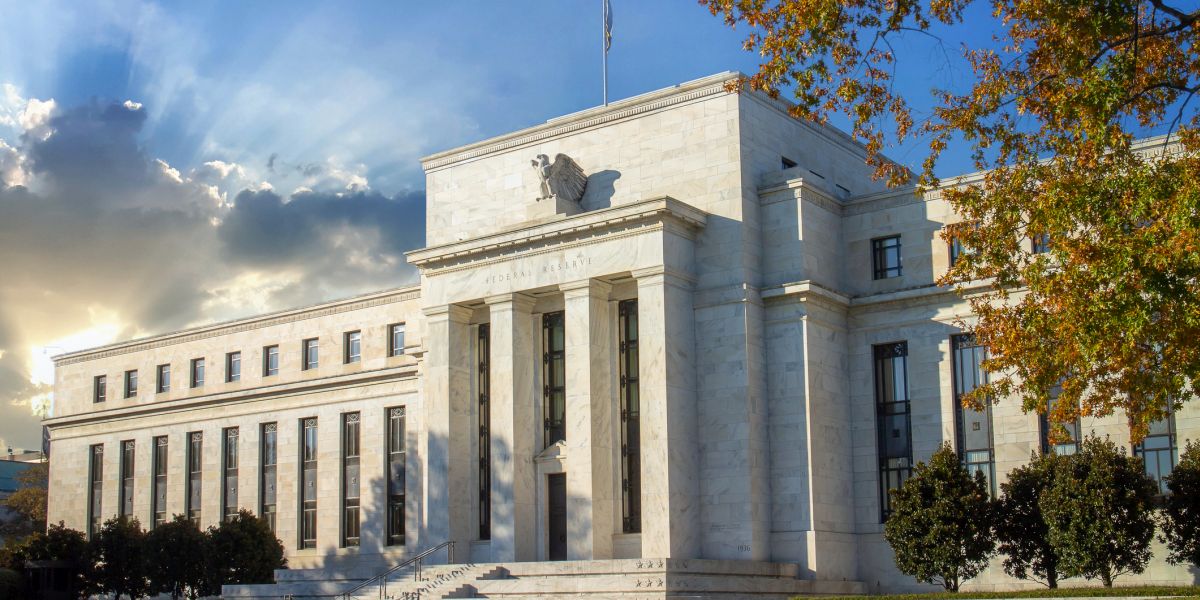Investors were happy with the interest rate decision and its interpretation. Despite the various concerns, there are still plenty of reasons to enter or stay in the market.
Finally, investors gained more clarity on the Fed's future interest rate policy. With last week's interest rate decision explained, we now know that the Fed is committed to three rate cuts of 25 basis points each for this year. However, Jerome Powell was not inclined to confirm that the first step would be in June. This will depend on data published in the coming months.
Of the latest 'A type of statistical graph', a scatter plot of the expected evolution of the interest rate according to the 17 managers allowed to vote on monetary policy, shows that one rate cut is now expected for 2025 because the Fed has revised the growth forecast for the US economy higher. If the economy remains strong, interest rates will not have to fall further.
Gradual reductions in interest rates
This leads to the following interest rate forecast: At the end of 2024, the official interest rate will be 4.6%, equal to the forecast in December. This rate is expected to decrease to 3.9% at the end of 2025 (from 3.6%) and to 3.1% at the end of 2026 (from 2.9%). The expected interest rate is a result of expected economic growth, underlying inflation and unemployment.
The expected economic growth was revised upward. The US economy is doing very well. Growth this year will not be 1.4%, as expected in December, but 2.1%. In 2025 and 2026, economic growth will reach 2% (from 1.8 and 1.9%, respectively).
The Fed expects core inflation to continue to decline gradually, but will not reach the 2% target until 2026. Unemployment will remain at 4% in the coming years, which is understood as “full employment.”
Less speed decreases in balance
In addition to the positive news on interest rates, the Fed also announced that it wants to tighten the economy less quickly. Powell is considering slowing down the huge balance sheet of about $7,500 billion that was built up during quantitative easing. Now, $80 billion is still being withdrawn from the economy every month. This must be reduced to prevent liquidity problems for banks.
Investors were happy. Not only on Wall Street, but also in Amsterdam, indices reached all-time highs.
There are still enough reasons why investors should exit the market and why people should not invest at this time. There are two wars raging close to home, inflation is not yet back to where it should be, the EU economy has been stagnant for a year, there is political unrest everywhere, the climate is warming, farmers are revolting everywhere, there is a housing crisis, there is a migration crisis, and there is a presidential election. There is a shortage of manpower everywhere. And stocks are expensive. At least, the latter is frequently claimed.
Wall of worries
Is it really better to get out now? Probably not. a “A bull market always climbs a wall of fears.”. As long as enough concerns remain, there is still room for upside. Just when everyone seems to think the stock market can only go up then it gets dangerous. Then all the good news is priced in and things can only get worse. It seems that that moment has not yet arrived.
Moreover, there are plenty of reasons to enter or stay in the market. The US economy appears to be resilient, and the European economy appears to be cautiously emerging from the bottom. The overall numbers have become steadily less bad. Interest rate cuts are coming, perhaps the first of their kind in Europe. Operating results have actually been better than expected over both quarters. The US government is working to stimulate the economy through flexible fiscal policy. Liquidity is flowing so abundantly through the economy that interest rate cuts do not appear necessary to support the stock market.
But stocks are expensive, right? The rise no longer depends on a few popular stocks. However, AI developments will continue to impact the stock market. Investors appear to be broadening their view to include “normal” companies that can also benefit from AI. Examples include publicly traded electricity companies that can benefit from the massive demand for electricity due to the AI revolution.
Lots of opportunities in other sectors
This doesn't mean investors should ignore big tech funds now, as they remain dominant players. But there are currently a lot of opportunities in other sectors. The stock market may correct by a few percent to eliminate its strength.
As long as this is not the result of obvious weakness in the economy, every correction represents a good entry point. After a good start, the rest of the investment year still offers plenty of opportunities.
Martine Halfkamp is Managing Director of Fintessa Vermogensbeheer. Fintessa is an independent, independent, specialist asset management desk from Baarn, and has twice won the Golden Bull Award. This post was compiled by Fintessa BV. The information contained in this publication is derived from publicly known sources and information that Fintessa BV considers reliable. This publication contains investment recommendations, but does not contain investment advice or an offer or invitation to buy or sell any financial instrument. Fintessa BV cannot guarantee the accuracy and completeness of the facts, data, opinions, forecasts and results stated. Fintessa BV is an investment company and is authorized under the Financial Supervision Act. Fintessa BV is regulated by the Dutch Financial Markets Authority and De Nederlandsche Bank. For the comprehensive disclaimer, we refer to our website www.fintessa.nl.

“Total coffee specialist. Hardcore reader. Incurable music scholar. Web guru. Freelance troublemaker. Problem solver. Travel trailblazer.”







More Stories
Bitcoin price rises after new jobs data from US
European stock markets open higher | beursduivel.be
Russia’s oil imports to China decline